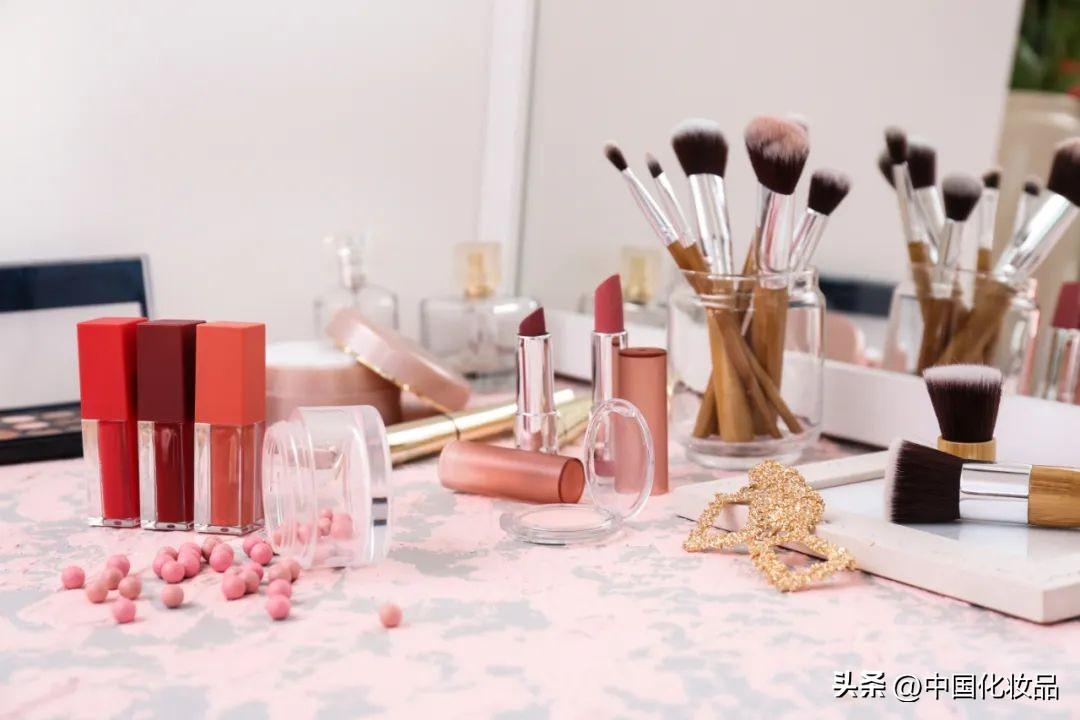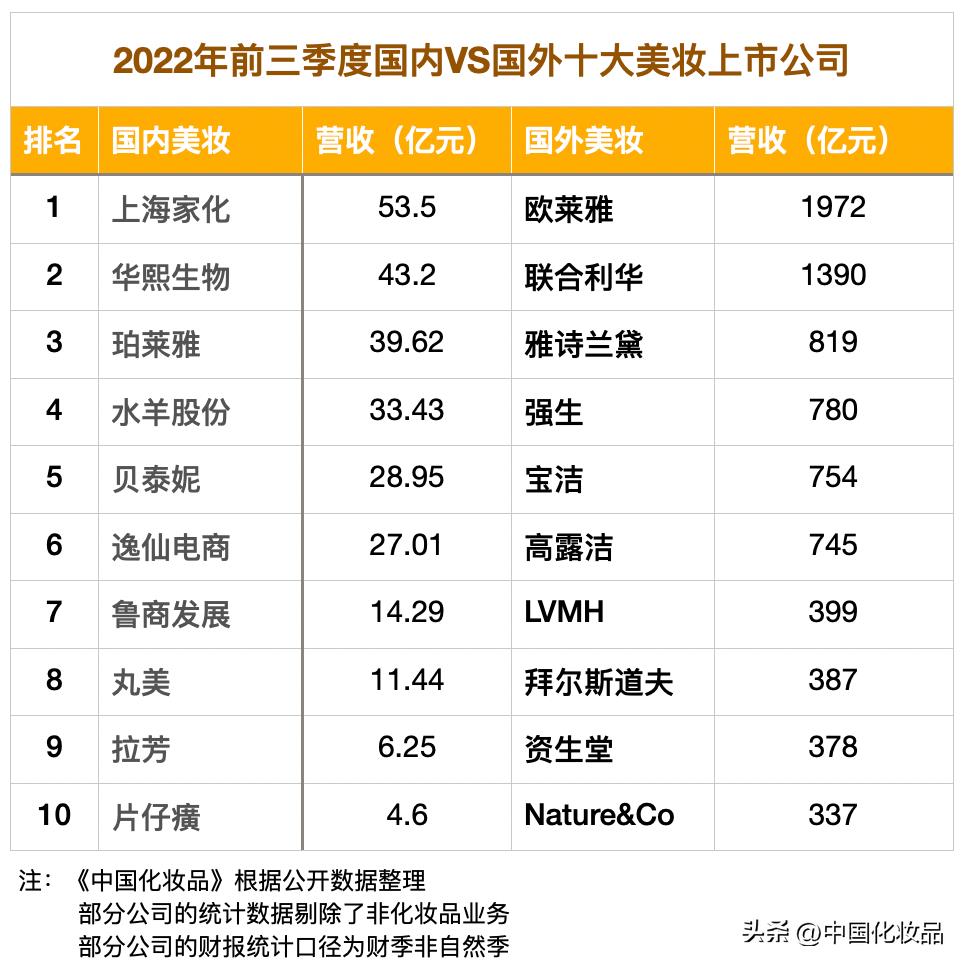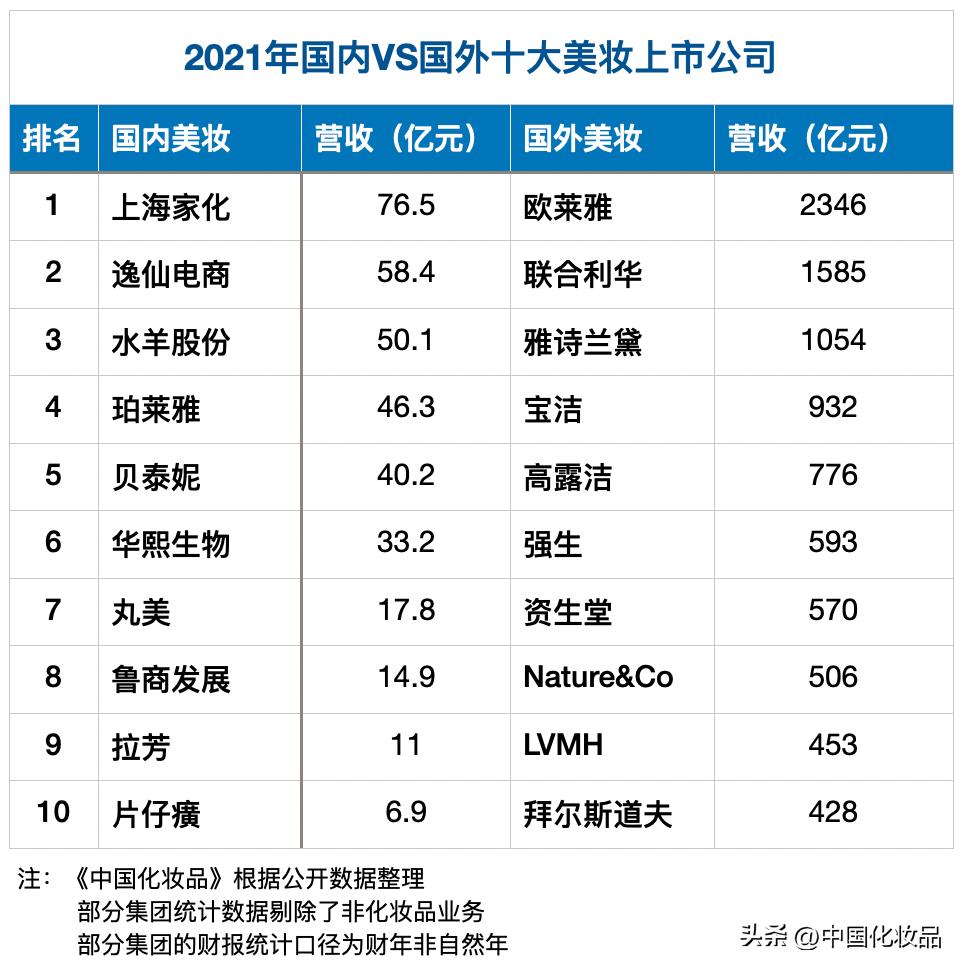

The development trend of 2023 is hidden in these changes.
Author | Xie Kangyu
In 2022, the strongest beauty group is still L ‘Oreal, and the new pattern of domestic beauty is supported by Huaxi Bio, Betani and Polaiya.
In 2022, more than 30 companies got financing, and more than 20 beauty companies went public. At the same time, more than 25 brands were dim and "left", and 210,000+cosmetics companies silently "disappeared";
In 2022, the big consumer funds turned off, and the beauty financing dropped to zero freezing point in November, while the industrial funds were particularly active this year. From international giants to domestic head companies, they all went to VC and invested/acquired more than 40 projects.
In 2022, 20 international giants adjusted key personnel positions, 9 groups reorganized their businesses, 6 national cosmetics brands set up innovative positions, and successively introduced talents such as chief scientists and chief digital officers.
In 2022, nearly 20 new beauty-related regulations were implemented, and e-commerce platforms such as Taobao, JD.COM and Tik Tok also launched eight related platform specifications, which was accompanied by 433 batches of cosmetics entering the unqualified list this year. More than 400,000 cosmetics were cancelled this year and many enterprises were banned;
In the first 11 months of 2022, the total retail sales of cosmetics fell by 3.1%, which underperformed the consumer market, and the growth rate dropped to the lowest level in five years. But the good news is that with the liberalization of epidemic prevention policy, the tourism retail channels have taken the lead in picking up, and the amount of duty-free shopping on Hainan’s outlying islands from December 13 to 10 exceeded 100 million yuan for seven consecutive days …
The change and invariability in 2022 are recorded in a series of figures, which constitute the underlying development context of the beauty industry in 2022 and reveal the new trend of the industry in 2023. In 2022, the rules were changed and reshuffled. In 2023, a new order is about to be formed, and the dawn of the change will drop to.

The top ten international companies are stable, and the domestic pattern has changed greatly.
In 2022, it will be a particularly difficult year for both giants and small and medium-sized players.
In the first three quarters, nearly half of the top ten international beauty cosmetics experienced negative revenue growth. L ‘Oré al, LVMH and Beiersdorf are the few companies whose revenue growth rate is still above 10%.
Among them, L ‘Oré al has the strongest data, ranking first with sales of 197.2 billion yuan and 12% increase, while Unilever and Estee Lauder are still behind it, with growth rates of 6.8% and -3.7%.


Comparing the rankings in 2022 and 2021, we will find that the ranking of the top ten international companies has not changed much, and the top three companies are stable. European and American companies occupy the market, Japanese and Korean companies continue to decline, and Shiseido, the only Japanese company on the list, continues to decline this year.
On the other hand, the list of the top players in China has changed a lot this year. In the past, Yixian e-commerce with the highest topic fell out of the top 5, and Huaxi Bio rose from the sixth to the second. At the same time, we can see that the gap between the second and third place and the first place is further narrowing. Although shanghai jahwa still ranks first in terms of volume, its performance continues to decline, with negative growth in revenue and net profit in the first three quarters, and its market value is also shrinking.
Huaxi Bio, Betani and Polaiya have become the top three companies in the market value of domestic beauty listed companies with high growth, supporting the new pattern of domestic beauty.
It is worth mentioning that many domestic beauty cosmetics have shown strong resilience in this year’s extreme market environment. Huaxi Bio, Betani, Polaiya and Lushang Development (cosmetics business) achieved high growth of 43.43%, 37.05%, 31.53% and 44% respectively in the first three quarters, surpassing a number of international giants in terms of growth. In addition, Huaxi Bio, which ranked second in revenue, made a net profit of 677 million in the previous three quarters, becoming the most profitable beauty company in China this year.
Although the overall size of domestic beauty cosmetics is still far from that of international giants, it has formed an increasingly clear impact on international giants.
According to the incomplete statistics of China Cosmetics, there are more than 20 foreign brands shrinking the domestic market in various forms this year (withdrawing from China, closing flagship stores, closing offline stores, etc.), among which there are many brands owned by international giants, such as Snowberry owned by Procter & Gamble, Chaling owned by LVMV, and The Eastern owned by Estee Lauder, whose common problem is simply that in the crowded beauty market, there is no strong consumer who has to buy. A large number of products with effective reputation, brand mind and more cost-effective have squeezed their living space.
Under the successive defeats of these nameless brands, a series of soul interrogations that international giants can’t avoid are: where will the next increment come from when the penetration of their main brands has peaked and the channels and customer groups have become increasingly stable? After price reduction and price increase are used one after another, what is the next means to ensure growth and profit? How can we continue to maintain a high premium and avoid the price impact of emerging new brands when the big-name aura is gradually disenchanted and alternative products are constantly emerging?
Many of the problems existing in giants are more profound in domestic brands, but similarly, these problems also constitute opportunities for domestic brands.

From OEM+Marketing to Technology+Efficiency
This year, with a number of "overnight success" brands in online celebrity, the competition logic and pattern of the entire domestic beauty market have undergone earth-shaking changes.
In the past, OEM+cost-effective+fast fashion was used in products, and the way of "blood-washing" social media and live e-commerce in marketing and channels began to fail. A large number of domestic beauty cosmetics rose rapidly in the footsteps of perfect diaries, and quickly disappeared in the rapid switch from "domestic beauty cosmetics" to "negative typical".
We will find that in the changes of these two years, the story of "rising overnight" in domestic beauty products is no longer there, and there are more and more stories of "making a fortune in silence". After several rounds of big waves, many companies still remain at the poker table, even some companies that seemed to be "not beautiful enough" before. Some of them have biotechnology backgrounds and some have medical backgrounds, and many companies are marked with distinctive efficacy and ingredients.
"Effective" and genuine technology have become new competition rules in the new stage. In 2022, enhancing R&D competitiveness was put in the most important position by major domestic beauty companies.
In the financial reports of major domestic beauty companies, the proportion of R&D has been increasing, and even some of them have surpassed international giants in terms of investment proportion. Among several head companies, R&D investment accounts for no less than 2% of total revenue, and the highest R&D investment in the first three quarters of Huaxi Bio accounts for 6.42% of total revenue, while the R&D investment in Betani and Polaiya, which have the highest growth, has increased by more than 80%, which also reveals to some extent why the new pattern is made by these three companies.
Another landmark event this year is that domestic enterprises collectively introduced the role of "chief scientist". This year, five companies introduced seven scientific research-related executives. For example, PMPM also introduced Sun Peiwen, Li Jinhua and Liao Feng as chief scientific research officer, chief formula scientist and R&D partner respectively. On the same day, Shuiyang Co., Ltd. and Polaiya hired Chen Jian and Wei Xiaolan as chief scientists and chief scientific officers respectively.
In addition to enhancing scientific research strength, beauty giants have also left the scene to do VC, laying out potential opportunities through industrial investment to build industrial chain barriers. In 2022, domestic and foreign beauty companies participated in about 40 investment acquisitions, the largest of which was Estee Lauder’s acquisition of Tom Ford, and the investment amount was L ‘Oreal, with a total of 5 cases.
Domestic companies have also made frequent moves this year. After setting up their own investment companies in the past two years, they have carried out many industrial layouts respectively. For example, this year, the most action was Shuiyang shares, which acquired two foreign brands, namely Ifidan and PierAuge, and invested in two domestic start-up brands.
Different from pure financial investment, industrial investment initiated by beauty companies is not only for financial benefits, but also for the formation of industrial resource sharing and business expansion. This year, large consumer funds continue to shrink, and the takeover of industrial funds has undoubtedly injected a wave of vitality into the industry.

The underlying rules have changed.
The tide of listing and bankruptcy are two other landmark events in 2022. In 2022, more than 20 beauty companies were listed, including Shangmei Group, Juzi Bio, Fuerjia and other beauty companies, as well as upstream companies in the industrial chain such as Bai Xinglong, Zhongrong and Yaxiang Spice.
On the other hand, more than 210,000 cosmetic enterprises were "deregistered" in the enterprise registration status, and in 2022, the number of registered cosmetics-related enterprises in China also declined for the first time in the past 10 years.
This year is the most serious year for the decline of the beauty market. According to the data released by the National Bureau of Statistics this month, from January to November this year, the total retail sales of cosmetics was 365.2 billion yuan, down 3.1% year-on-year, much higher than the 0.1% decline in the total retail sales of social consumer goods, setting a new low in the past five years. From August to November, the growth rate of the cosmetics industry has declined for four consecutive months.
In fact, this year’s decline is a continuation of the overall decline of the industry since 2020, and this year’s black swan incident is particularly frequent. From the suspension of Shanghai at the beginning of the year to the epidemic, more and more cities have been affected. The suspension of express delivery and factory shutdown has greatly inhibited the forward development of the industry. At the same time, the cost increase brought about by the changes in global monetary policy and the constant consumption power have made the industry even worse.
In 2022, the underlying competition logic of the cosmetics industry has also undergone fundamental changes, which is largely due to changes in regulatory rules. In 2022, it is a crucial year for the implementation of new cosmetics regulations and supporting regulations, and it is also a year for the cosmetics industry to make waves.
Previously, according to China Cosmetics, in the past year, relevant departments issued and implemented nearly 20 related laws and regulations. As a whole, there are several major trends: the supervision is further tightened, the rules and standards are clearer, the punishment is more severe, and all aspects such as raw materials, production, brands and channels have been "legally followed".
From this year’s intensive punishment, we can see that five enterprises have been banned this year, and even two have been banned for life. At the same time, with the implementation of the Measures for the Administration of Cosmetics Registration and Filing, more than 400,000 cosmetics were cleared nationwide.
In addition, the entry threshold of the industry as a whole has been continuously improved. In 2022, higher requirements have been put forward for factories, brands and testing institutions. For example, production quality is no longer a matter for factories, and brands should also take relevant responsibilities.
"Inspection Points and Judgment Principles of Cosmetic Production Quality Management Standards" made it clear that brands should also participate in quality supervision, while "Qualification Certification Conditions for Cosmetic Inspection Institutions (Draft for Comment)" made clear requirements for the organization and management of inspection institutions and the qualifications of employees, and the threshold of cosmetics inspection industry was greatly raised.
In 2023, with the implementation of many new regulations, we can meet that the reshuffle of the industry will continue, a new order will be formed soon, and the whole industry will further develop in a healthy and orderly direction in the "pain" of change.
With the liberalization of epidemic control, the cosmetics industry is likely to usher in the dawn in the new year. In December, as an important business segment of many companies, tourism retail has taken the lead in welcoming good news. According to Haikou Customs data, from December 13th to 19th, the amount of duty-free shopping in Hainan’s outlying islands exceeded 100 million yuan for seven consecutive days, which brought a little warmth to the start of 2023.
Change the disk and wait for the dawn.
关于作者